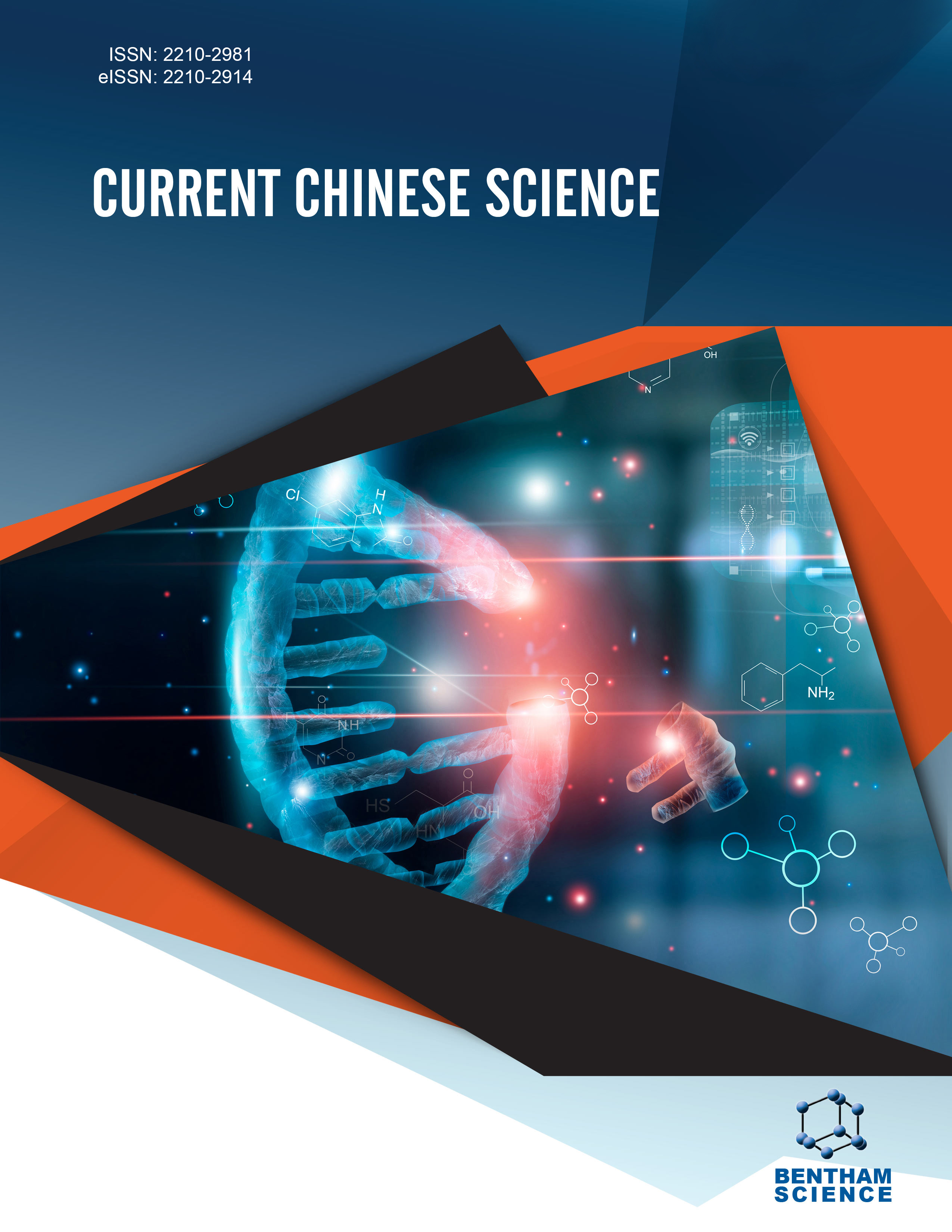- Home
- A-Z Publications
- Current Chinese Science
- Previous Issues
- Volume 3, Issue 5, 2023
Current Chinese Science - Volume 3, Issue 5, 2023
Volume 3, Issue 5, 2023
-
-
Recent Advancement in the Green Synthesis of Silver Nanoparticles
More LessAuthors: Ajay Thakur, Monika Verma, Ruchi Bharti and Renu SharmaBecause of its miscellaneous properties, developing less environmentally hazardous and trustworthy methodologies has become one of the most crucial steps toward synthesizing nanoparticles (NPs) among researchers and scientists. In this direction, silver nanoparticles (AgNPs or SNPs) have gained much attention because of their anti-inflammatory, antibacterial, antiviral, and antifungal properties, potential toxicity, and unus Read More
-
-
-
Superhydrophobic Graphene-based Materials
More LessAuthors: Mohamed S. Selim, Ahmed M. Haggar, Xiang Chen, Zhifeng Hao, Magdy M. H. Ayoub and Weijian WuInternational attention has been directed toward superhydrophobic nanocomposite coatings for a great variety of industrial applications. Nowadays, graphene-based self-cleaning coatings represent the most important examination arenas. This study reviews the superhydrophobicity fundamentals, graphene-based nanocomposite fabrication and applications for self-cleaning surfaces. These efforts have stimulated the Read More
-
-
-
Amphiphilic Copolymer-based Pesticide Nanoformulations for Better Crop Protection: Advances and Future Need
More LessAmphiphilic copolymers (ACPs) are widely recognized due to their self-organizing micellar characteristics in an aqueous medium and their extensive application potential in bioactive molecule delivery. However, their use in agriculture is still limited with some scattered research studies, especially on the delivery of pesticides for crop protection. Hence, the present study comprehensively summarizes these research findings mainly Read More
-
-
-
Role of Genetics and Surgical Interventions for the Management of Cerebral Cavernous Malformations (CMM)
More LessAuthors: Anjali Patel, Daisy Valle, Andrew Nguyen, Eduardo Molina and Brandon Lucke-WoldCerebral cavernous malformations (CCMs) are comprised of tissue matter within the brain possessing anomalous vascular architecture. In totality, the dilated appearance of the cavernoma takes on a mulberry-like shape contributed by the shape and relation to vascular and capillary elements. Analyzing its pathophysiology along with its molecular and genetic pathways plays a vital role in whether or not a patient receives GKRS, Read More
-
-
-
Identification of Active Compounds of Pueraria Lobata and their Mechanisms of Action by LC-MS/MS and Network Pharmacology
More LessAuthors: Dong-min Cao and Tao LiuBackground: Osteoporosis has become a global public health problem, and Pueraria Lobata (PL) is a potential drug for treating osteoporosis. Methods: Firstly, the components of PL were detected and identified based on UHPLC-Q-Exactive Orbitrap MS. In addition, we used network pharmacology to study the potential mechanism of PL in treating osteoporosis. Result: A total of 48 compounds, including 38 isoflavones Read More
-
Most Read This Month
Article
content/journals/ccs
Journal
10
5
false
en


